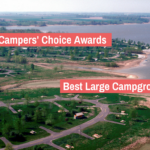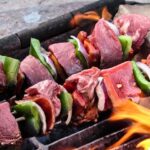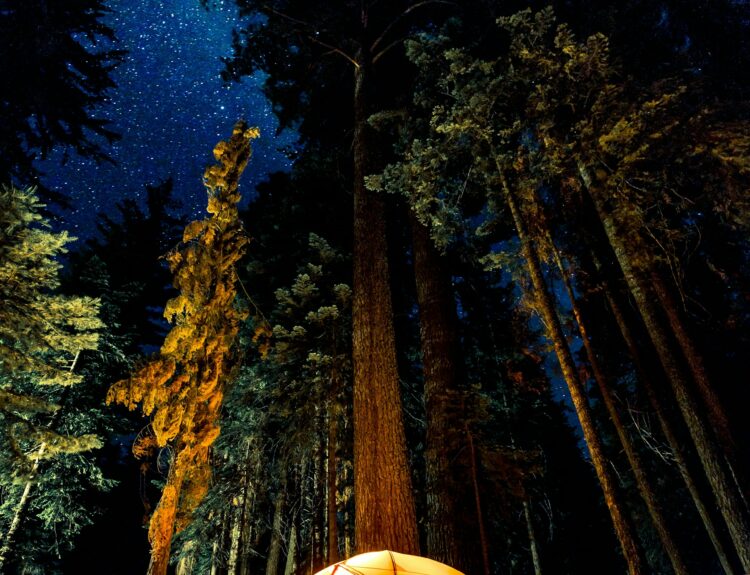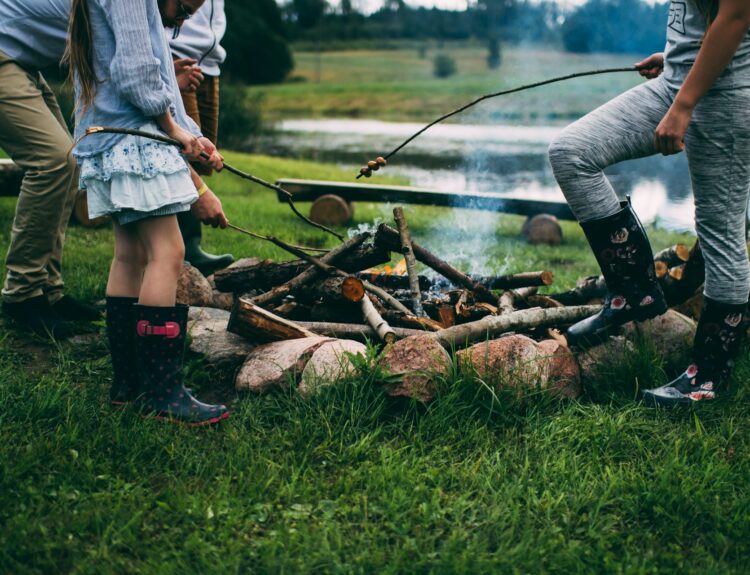This will be the fundamental guide to free camping and boondocking. You’ve undoubtedly heard of boondocking before, but you may not know what it is. Boondocking, or dry camping in an RV, is a form of free camping without any hookups. This means no running water, electricity, or access to restrooms. Essentially, boondocking is driving out into the wilderness and making a plot of land your home for a night or two. The term actually refers to the place you set up camp and not to the act of camping there.
In other words, boondocking is the opposite of glamping. It’s camping as close to nature as possible. [bctt tweet=”Boondocking is the opposite of glamping. It’s camping as close to nature as possible.” username=”@Rover_Pass”] This form of free camping means taking a few extra precautions to ensure your safety. We’ve got you covered with a comprehensive guide containing everything you need to know before you go boondocking for the first time.
Your Guide to Free Camping and Boondocking
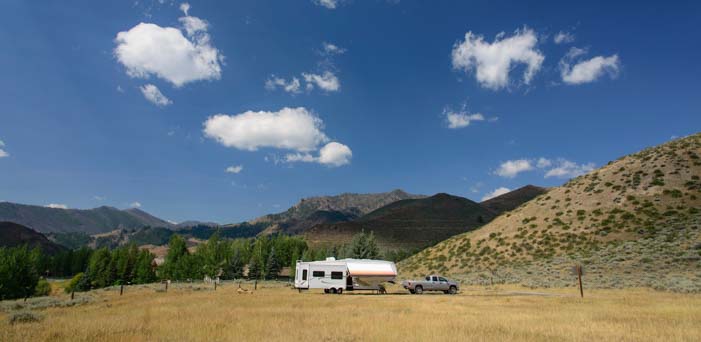
Credit: roadslesstraveled.us
Where to Camp
If you plan trying out free camping in a State or National Park, definitely visit a ranger station where an employee can give you their expert advice and the best and safest places to boondock. For free camping spots outside federal and state property, networking is your best bet. Ask fellow RV friends you know, or visit one of the numerous RVing forums where someone has undoubtedly asked about the best places for free camping wherever you’re going.
More generally, you’ll want to look for a few key features in any boondocking spot. Pretend you’re living in an age predating civilization as we know it and look for natural amenities that make for a good temporary home. A lake or river nearby is always a great asset, not only as a source or drinking and bathing water but for recreation as well. A shady spot with plenty of trees is also always a plus and encouraged in the fundamental guide to free camping and boondocking.
What to Pack
Food and Clothing
In deciding what to bring with you on your free camping trip, it’s more important to consider what not to bring than what to bring. Unless you’re traveling in a 30+ footer, space is going to be at a premium. If you’re only dry camping for a single night, a change of clothes and pajamas aren’t even necessary.
Same goes for the food you bring. Think hobo dinners of potatoes, veggies, and ground beef, and pancakes for breakfast. You can pre-chop and marinade the veggies at home to save time. If you’re traveling in an RV with a full refrigerator, you can be more liberal with the food you bring. If you aren’t, be sure to bring ice.
Ice
We recommend bringing a pound of ice per quart of cooler space per night. If you’re bringing a 20-quart cooler on a two-night trip, for example, you’d bring 40 pounds of ice. However, make sure you keep excess ice in an extra cooler not included in your initial calculations. Lastly, remember that cold air sinks, so put your ice into your cooler last.
Avoiding Trash
The trash you create will take up more space than anything else you bring. For this reason, you should focus on bringing fresh foods that don’t come with any packaging that needs to be trashed. Think of bringing healthy foods you’d buy along the edges at a supermarket: fresh produce, meat, eggs, and foods that generally need to be refrigerated. If your space in your fridge or cooler is especially limited, granola bars and beef jerky are good bets. Keep all full trash bags in a closed basement bin or trunk as opposed to in the open air where they can attract wild animals and bugs.
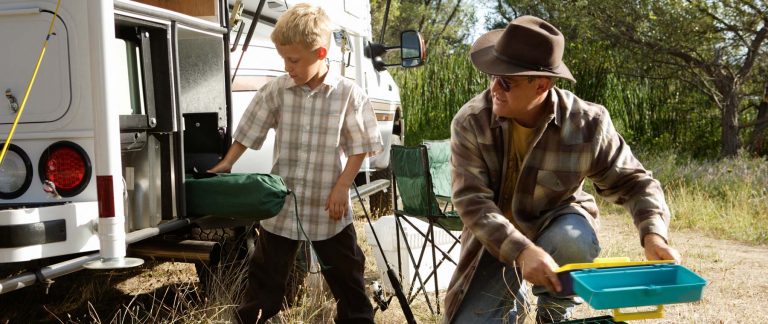
Credit: rvcoutdoors.com
Water Conservation
Drinking Water
The most important resource you need to bring we haven’t yet touched upon is water. For those of you that own a water distiller, this topic isn’t a problem. You can simply park by any fresh water source and convert it to clean water that’s safe to drink. Another great option for RV owners is buying a freshwater tank, which should easily last you and your family through even multi-night trips.
Want to Grow Your Campground Business?
Book a FREE, personalized demo to learn about how RoverPass will save you time and help you earn more revenue
The next best option is to bring Camelbacks and water bottles with you or simply buy some at the store. Be sure to bring at least three liters of water per person per day in the fundamental guide to free camping and boondocking. Pack an additional liter for every five miles you plan on hiking.
Grey Water
This is the water used by sinks and showers. The easiest way to cut down on grey water is to take extremely short showers. You can enjoy a hot, 30-minute shower when you get home. Boondocking showers should be comprised of a short rinse, turning the water off, lathering up, and rinsing again. Remember, if you fill up your water tanks too quickly, dumping them where you set up your dry camp is illegal.
Another good way to cut down on grey water is to avoid creating dishes that will need to be washed. Opt for paper plates and plastic forks. As long as you manage the trash you make via other sources, you shouldn’t create too much.
Black Water
Black water is your toilet waste. It shouldn’t fill up as quickly as your other two tanks. However, if you can’t dump your grey water just anywhere, it stands to reason that you absolutely can’t dump our black water anywhere. Don’t worry, though, so long as you emptied your tank before your trip, most RVs come with black water tanks that can last two weeks without being filled.
Electricity Conservation
Free camping comes at the expense of being off the grid. This means you’ll only have access to 12-volt electricity, not 120-volt as you would at a campground with hookups. All you’ll likely have power for will be your water pump, lights, and fridge. And you only have as much power as your RV battery has stored in it. For this reason, energy conservation is key in the fundamental guide to free camping and boondocking.
You shouldn’t use lights during the day at all and should settle for flashlights, reading lights, candles, and lanterns whenever possible. If you find that this still all isn’t enough, you can always purchase a generator. Just remember that they are terribly loud and can ruin the peace and quiet that camping provides in the first place.
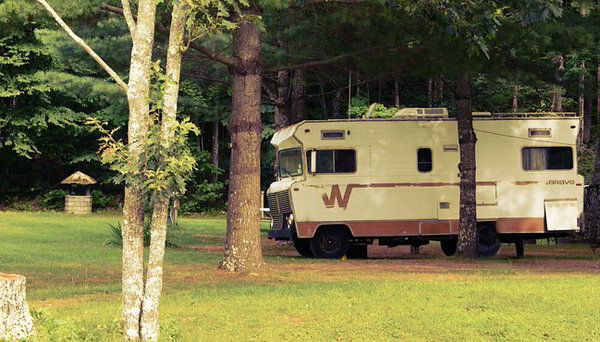
Credit: bentsrv.com
Free camping isn’t as difficult as it might seem at first. It’s one of the most rewarding experiences you can have “for free.” Hopefully, this guide has eased any trepidations you may have initially had. Once you pack everything you need and find a safe location to camp, it all comes down to managing your resources properly with the fundamental guide to free camping and boondocking.





